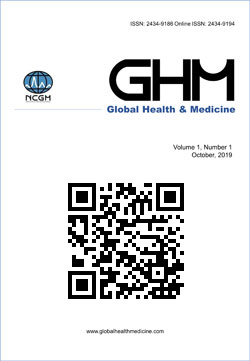2 巻, 1 号
選択された号の論文の10件中1~10を表示しています
- |<
- <
- 1
- >
- >|
Editorial
-
原稿種別: editorial
2020 年 2 巻 1 号 p. 1-2
発行日: 2020/02/29
公開日: 2020/03/26
PDF形式でダウンロード (233K)
Policy Forum
-
2020 年 2 巻 1 号 p. 3-8
発行日: 2020/02/29
公開日: 2020/03/26
[早期公開] 公開日: 2020/02/25PDF形式でダウンロード (1391K)
Review
-
原稿種別: review-article
2020 年 2 巻 1 号 p. 9-17
発行日: 2020/02/29
公開日: 2020/03/26
[早期公開] 公開日: 2020/02/17PDF形式でダウンロード (781K) -
原稿種別: review-article
2020 年 2 巻 1 号 p. 18-23
発行日: 2020/02/29
公開日: 2020/03/26
[早期公開] 公開日: 2020/02/05PDF形式でダウンロード (846K)
Mini-Review
-
原稿種別: research-article
2020 年 2 巻 1 号 p. 24-28
発行日: 2020/02/29
公開日: 2020/03/26
[早期公開] 公開日: 2020/02/02PDF形式でダウンロード (1625K) -
原稿種別: research-article
2020 年 2 巻 1 号 p. 29-32
発行日: 2020/02/29
公開日: 2020/03/26
[早期公開] 公開日: 2020/02/02PDF形式でダウンロード (3286K)
Original Article
-
原稿種別: research-article
2020 年 2 巻 1 号 p. 33-38
発行日: 2020/02/29
公開日: 2020/03/26
[早期公開] 公開日: 2020/02/25PDF形式でダウンロード (490K) -
原稿種別: research-article
2020 年 2 巻 1 号 p. 39-43
発行日: 2020/02/29
公開日: 2020/03/26
[早期公開] 公開日: 2020/02/26PDF形式でダウンロード (266K)
Communication
-
2020 年 2 巻 1 号 p. 44-47
発行日: 2020/02/29
公開日: 2020/03/26
[早期公開] 公開日: 2020/01/27PDF形式でダウンロード (523K) -
2020 年 2 巻 1 号 p. 48-52
発行日: 2020/02/29
公開日: 2020/03/26
[早期公開] 公開日: 2020/02/02PDF形式でダウンロード (260K)
- |<
- <
- 1
- >
- >|
